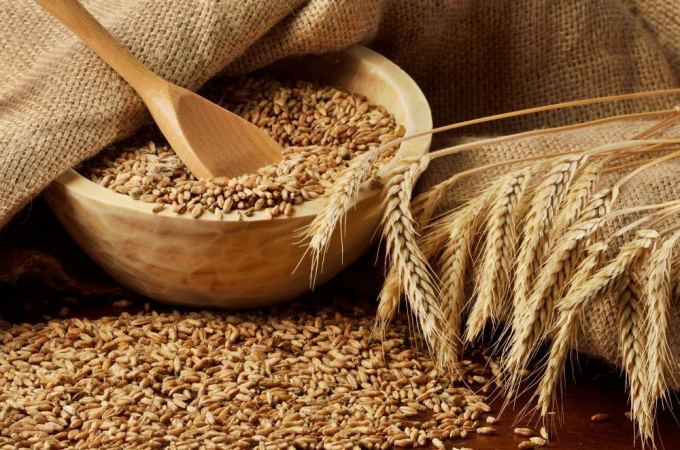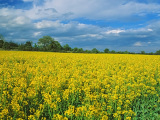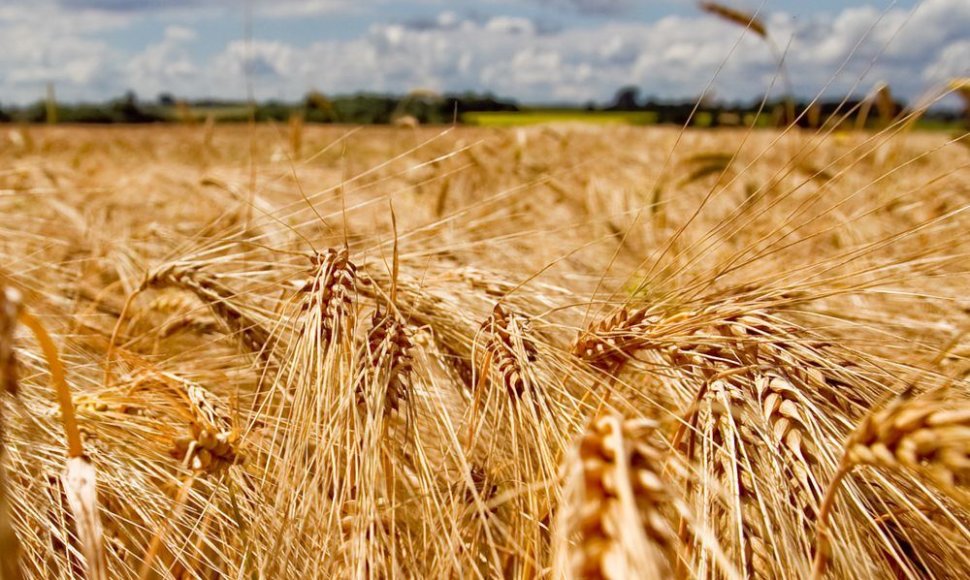Less export
In 2012, Lithuanian farmers reported record-high yields of 4.7 million tons of grain. This year's estimates put the number 8 percent bellow last year's crops, yet still well above the long-time average, at 4.3 million tons, according to the Ministry of Agriculture.
Mr Bertašiūnas has one thousand hectares of grain fields. Starting next week, he will have to harvest wheat as well as rape, but says that there will be not as much top-quality grain this year: “The crops are of poorer quality, because the grain ripened during very hot days. Grains will be smaller and probably of lower nutritional class.”
Lower-quality grain is usually used to feed animals, while high-quality crops are exported. On average, Lithuania exports a little under half of its total yields. Last year, grain exports totalled LTL 1.5 billion, or EUR 435 million.
This year, Lithuanian crops will not fetch that much – in addition to lower yields and crop quality, grain price in international markets will be pushed down by excellent crops in biggest grain exporting countries. According to estimates by the The Food and Agriculture Organization of the United Nations, global grain crops will grow 7 percent this year.
Bertašiūnas confirms that fellow farmers in other countries expect a very good year – his own relatives in Ukraine complained of meagre crops last year but are now very hopeful.
 |
| Grūdai |
Too little sun
“Last year, high grain price had to do with poor harvests in the major grain markets – the US, Russia, Ukraine, and Western Europe,” says Vladas Bagavičius, board chairman at agriculture company Agrowill Group. “Bad crops were due to natural factors. For instance, American farmers were struck by draughts, but this year, everything was fine, hence the drop in prices.”
He says that, in early spring, Lithuanian farmers were quite pessimistic after an unusually long winter, but now, after harvesting the first rape crops, they expect them to be almost as good as last year.
We are a little anxious that wheat crops might not be of top quality, because it was very hot and dry at one point this summer and now, when sunshine is needed, there's not so much of it.
Bagavičius is unsure about crop quality yet – rape farmers are quite happy, while wheat seems less promising.
“We are a little anxious that wheat crops might not be of top quality, because it was very hot and dry at one point this summer and now, when sunshine is needed, there's not so much of it. It is still a little premature to jump to conclusions, but it is unlikely that we will have much top-quality grain,” Bagavičius believes.
Wheat potential
Lithuania's domestic market claims, on average, 800 thousand tons of wheat annually. That represents less than one third of Lithuania's total wheat yields (2.5 million tons), so the rest goes for exports. Lithuania is among European leaders in terms of wheat export to domestic consumption ratio.
Lithuania's biggest processor of wheat is starch manufacturer Amilina. The company is expanding rapidly – last year it processed 240 thousand tons of wheat, this year's projections are 300 thousand, and next year, almost half a million. Amilina exports 98 percent of starch it makes.
“Lithuania is rich in competitive raw stocks, so we are ambitious. We invest into our plant. We will be producing glucose and other syrups for the food industry,” says Mindaugas Gedvilas, CEO of Amilina.
He believes that 2013 might well be the second-best year for wheat farmers in Lithuania's history. Gedvilas is unperturbed by plummeting prices in global markets.
 |
| Asmeninio archyvo nuotr. /Mindaugas Gedvilas |
“We make money from the processing margin, which is stable. If wheat prices go down, they do so in Lithuania and France alike. That means that our competitors in France buy cheaper wheat as well and offers their production more cheaply. If they lower their starch price, so must we,” Gedvilas says.
Unlike other experts who spoke to 15min, he believes that this year's harvest will be of a better quality than last year.
“But any talks about quality are fortune-telling. We must wait until we harvest at least one fifth of our crops before we can say anything for certain,” he comments on diverging opinions regarding wheat quality.
Growing grain – simpler and more profitable
Albertas Gapšys, product marketing director at the Lithuanian Institute of Agrarian Economy, assures that there is nothing unusual about farmers being pessimistic. “Last year, just like now, they said that the grain will be of low quality, though in fact the quality varied. Besides, we do need feeding crop, too.”
 |
| Rapsai |
As to the projected grain price, he estimates that this year's crops should fetch 15 percent less than last year. At the moment, one ton of top-quality grain costs LTL 600 (EUR 174), but the market still lives on last year's stock. Fresh grain will sell for more.
Excellent harvest in 2012 also gave a boost to profitability of grain farms – investment returns averaged 20-25 percent. However, Gapšys says, it is not only high returns on investment that lures farmers into growing grain. Tending to grain farms is much easier than, say, stockbreeding.
“Profit is not the point. Everyone wants to grow grain rather than milk cows, because livestock requires constant labour. Whereas once you're done with seeding, you do need to look after the crops, but it requires significantly less time,” Gapšys explains.













